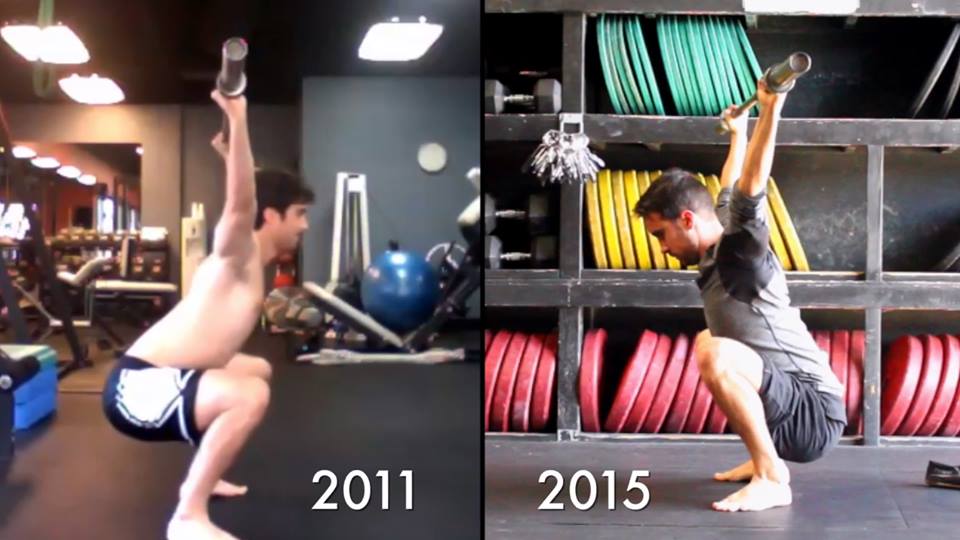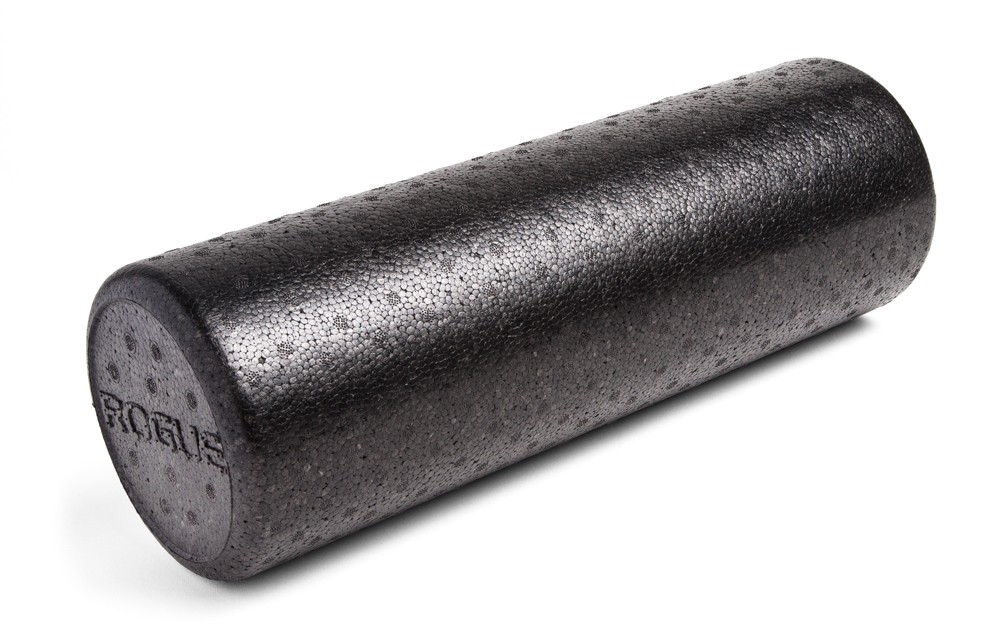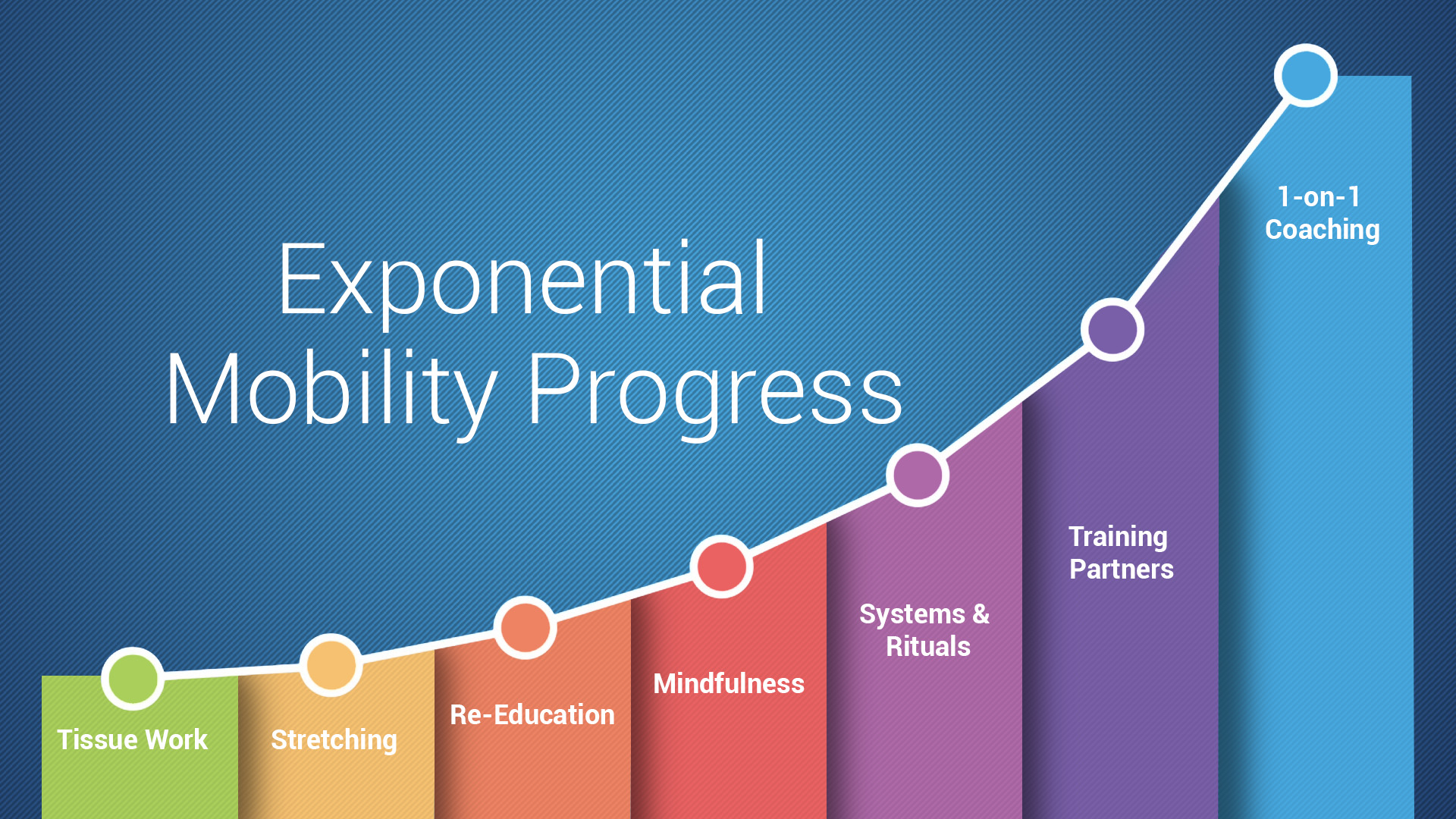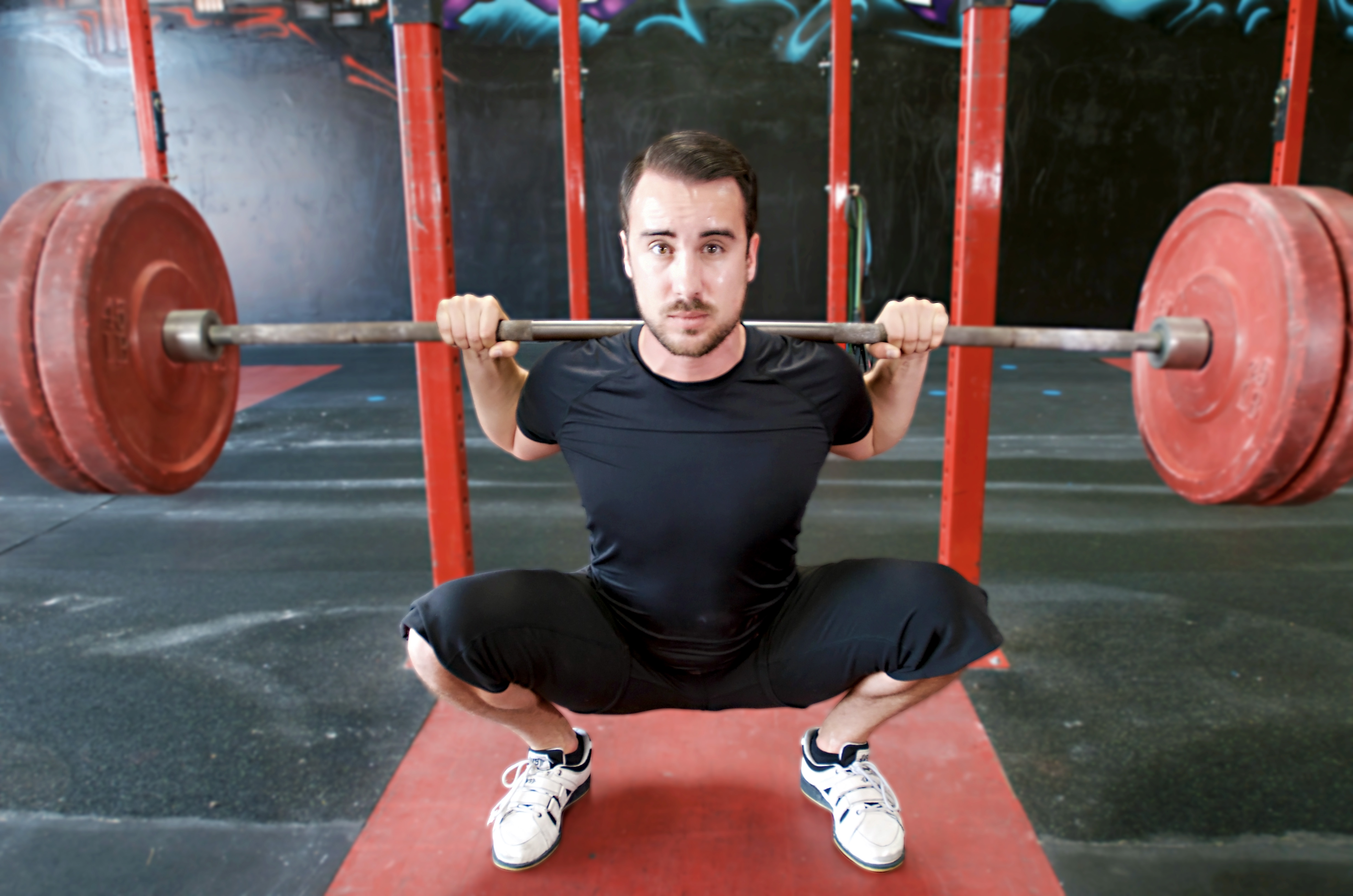[ARTICLE] The Ultimate Guide to Full Squat Flexibility

Getting deep squats takes time, effort and discipline.
It's an undertaking that only a few may choose to see all-the-way through.
Is the journey worth the struggle? Yes...but only if you have a burning desire that will fuel your trek.
As I see it, there are two compelling reasons to work hard and earn a deep squat...
Performance Motivation
Reason #1 is simply because squatting “ass to grass” is…badass!
Think about it…what catches your eye in the gym the most (besides the hot babes on the ellipticals?) For most lifters…one of the most “head-turning” feats of strength is the mythic “ATG” squat.
In fact, if you've ever witnessed such a feat yourself...its almost like seeing a unicorn!
If you yourself have accomplished such a feat - pat yourself on the back! Chances are you've already earned the respect of anyone who witnessed your glorious achievement.
If you aren't quite there yet, here are 4 good reasons to go for the "holy grail" of weight room feats.
Powerlifters: Always Get 3 White Lights
If you are a powerlifter, you probably squat with conventional stance. Wide stance, parallel depth, and lots of weight. The only problem is this stance leaves little room for error. Often, lifters will not get a successful lift due to missed depth. The solution? Give yourself a little bit of a “mobility buffer” so that you always know you will hit depth.
Cross-fitters: No More “No Reps!”
Imagine doing hundreds of reps of squats only to found out a good part of them were "no reps"? I know. Very annoying. In fact, a few “no reps” could cost you an entire competition or at least a new PR. Having a little (or a lot) of "extra" mobility can be the difference between winning and losing.
Bodybuilders: More ROM = More Growth
When it comes to bodybuilding, the goal is maximal size and symmetry. Full squats allow you to get more out of your squats by using a larger range of motion. It’s also what Arnold would demand you do.
Olympic Lifters: Position = Power
Getting optimal squatting mobility will make your more biomechanically sound, which means more power. Look at any elite level Olympic lifter. Whether Chinese, Russian, or American - you can bet your ass they are quite flexible. Being anything less is leaving kilos on the platform and risking injury.
PAIN MOTIVATION
Reason #2 to get deep squat mobility is because pain SUCKS. Not only that, but squatting till you’re 100 is pretty much the coolest thing you may ever do! So why do so few athletes even make it beyond 40?

Think about it… when is the last time you saw a 50, 60 or 70 year old guy doing rock-bottom squats in the gym? It's pretty rare!
Simply put...pain and injury catch up with almost everyone.
Range of motion decreases with age (unless you do something about it) and injuries start to accrue (unless you do something about it!)
The take home point is that if you don’t have a specific plan to stay flexible and injury free then you’ll end up being just another old “half-repper” (or worse), you’ll be so plagued with injuries you won’t even be in the gym!
What To Do If Squats Hurt You
Do you ever experience knee, hip or back pain when you squat?
If so, your not alone!
Back in 2011, I suffered immense hip and back pain due to a little known condition called "Femoral Acetabular Impingement" (FAI). This medical condition means my hip bones are poorly shaped for squatting. To make matters worse, I also had a "cam lesion, subchondral cyst, and a labral tear."
Sounds Scary, Right?
Five years ago, I couldn't even think about squatting. The injury not only prevented me from working out, but it also stopped me from even putting on my own socks. I was in such bad shape I had my girlfriend putting my socks on for an entire month.
At the time, I was told surgery was inevitable and that there is no other option for the condition. But, at age 26, unhappy with the choices presented to me, I decided to try to resolve the problem myself.
Fast forward 5 years and I have avoided surgery and radically transformed my mobility. Recovery consisted of an intensive, multi-year journey of practicing every non-surgical method out there but it was 100% worth it.

The are two reasons I am sharing this story with you:
- To let you know that massive change in your flexibility is possible
- To encourage you to start NOW before your immobility bites you in the ass
Whatever your motivation – pain or performance, what do you do now? It's simple – you've got to take your mobility seriously. Set a goal for yourself to become a “master mechanic” on your own body and get to work!
If you've decided to take the plunge, the next question is...where to begin?
The Mobility Revolution
Forward thinking coaches like Kelly Starrett and Eric Cressey have been preaching about the merits of mobility for a while now. The fitness industry has seen a huge increase in the popularity of various “mobility” methods, but are all methods created equal?

For example, what if you already do some foam rolling? What if you already stretch a bit? Is that enough?
The problem with basic stretching and foam rolling (mobility 101) is that its effectiveness is short-lived.
Just as your body adapts to lifting 50 pounds (and stops getting stronger), it also adapts to "mobility 101" and stops getting more mobile.
Unless you take it up a notch.
I teach what is called the "TSR" approach, which stands for Tissue Work, Stretching, and Re-Education.
This system applies the “progressive overload” principle of weightlifting to mobility.
This system applies the “progressive overload” principle of weightlifting to mobility. This way your progress rarely stalls because the stimulus is constantly increased. This is a systematic, progressive approach to range of motion training.
The TSR system includes unique mobility exercises created during my journey out of FAI. It also brings together the “best practices” from:
- Massage Therapy / Myofascial Work
- Physical Therapy
- Corrective Exercise
- Strength and Conditioning
- Martial Arts / Gymnastics, etc
The #1 reason why this approach is different is because of the additive effect it has on your results.
The Compound Effect
Stretching, tissue work and motor control training in isolation are nothing special. The magic is when you combine the three in an intelligent way.
When highly targeted tissue work is combined with progressive stretching and refined motor control training – the results are typically 2-3x better than traditional approaches.
I call this "The Compound Effect."

It's similar to how your money can grow at an exponential rate due to compounding interest and it's what allows people who are already familar with "stretching" or "rolling" to experience significantly better results.
Even advanced Yogi’s and lifters who are already familiar with “mobility" or asanas will still benefit from some of the new exercises in this 3-step approach.
OK, enough blathering. Check out the six exercises below to get you started on the TSR path to deep squat mobility.
6 Exercises for Deep Squats
Tissue Work:
This exercise will help you to get your knees out when squatting and be more upright. Also, when you free the tension in adductors (the groin muscles), a whole new world of pain-free squatting awaits.
Most people feel a pinching sensation in the spot above their quads. One of the culprits may be the quad attachment points that need to be relaxed. Since they are small in size, you can't really reach them with a foam roller. This solves that problem.
To free up your hamstring attachment points, you will need a softball and a box. Put the softball just under your "sits bones" (ischial tuberosities) and start applying some pressure. The inner hamstring / adductor junction is usually particularly junky and in need of work!
Stretching:
To stretch your calves, you can do it off of the bench by dropping your heel down. However, we can do "calf stretching on steroids" by adding extra weight to the equation. Do so by putting on a belt, hanging a kettlebell, and getting back on the bench. Enjoy!
One of my favorite hamstrings stretches includes a partner who will assist me by raising my leg as I relax deeper into the stretch. To perform this exercise inhale, contract the hamstrings for 5 second, exhale and relax. Allow your partner to raise your leg higher.
Re-Education:
To improve your squat, you absolutely MUST refine your technique. Instead of following the traditional cues of "chest up! arch your back!" Think, "chin down, ribs down, abs braced, knees out, and feet flat." When perfected, this will eventually allow you squat deeper and feel more comfortable.
Squat Till You Drop!
The 6 exercises above are just the tip of the mobility iceburg. I hope even this small taste gives you a sense of the potential of taking a "deep dive" into this world of TSR mobility.
Getting mobile is one of the highest "return on investments" for your body. Think of it like the alignment on your car. To the degree that your alignment is good is the degree that you will be injury free and performing well. It is LITERALLY your physical foundation.
Whatever type of athlete you are, and whatever your motivation (pain or performance), you can get "Deep Squats." Will there be obstacles? Yes...
...but journey is worth it.
Happy squatting!
About the Author:

Shane Dowd is a sports performance and mobility coach. He specializes in injury prevention and flexibility for athletes.
He is also the author of the Deep Squats 45-day program










